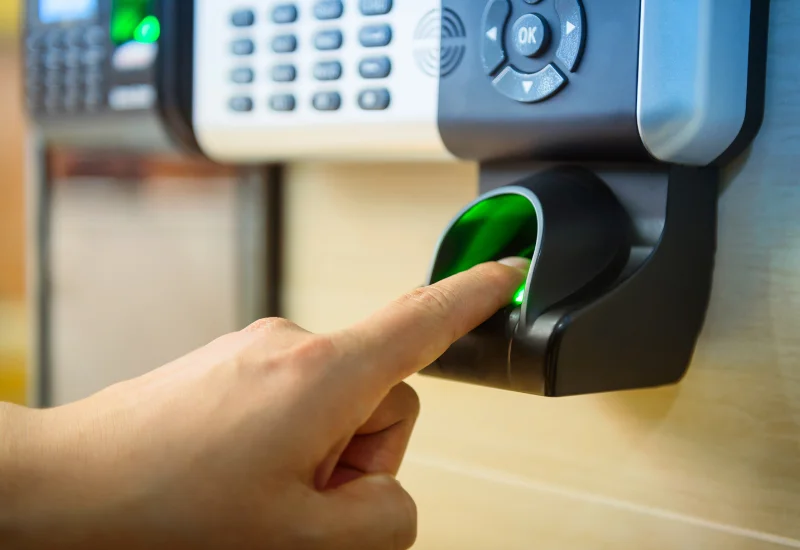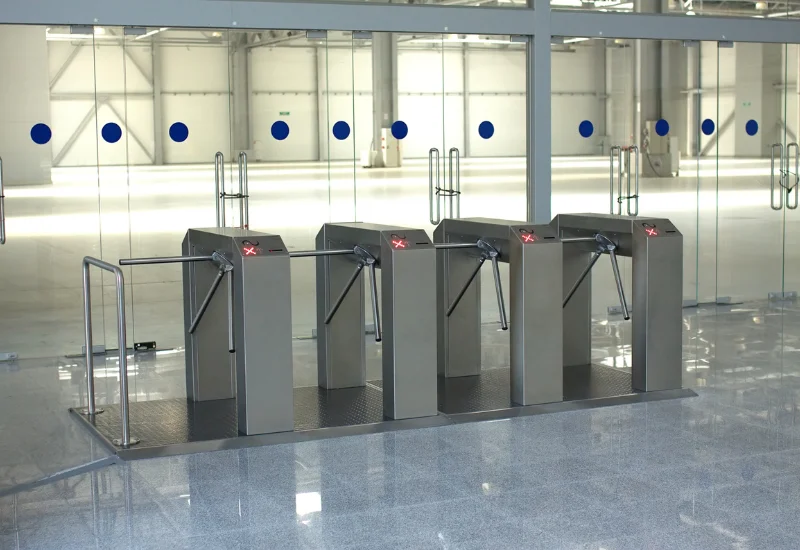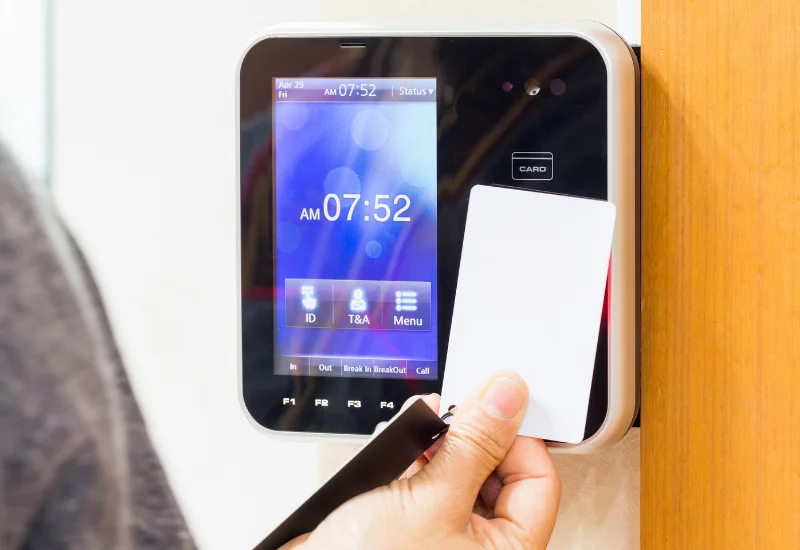
Jun 03, 2025
Discover how integrating visitor management and access control enhances your business security. Read our blog for practical tips and the latest trends in security technology.
Written by Jill - Written: April 24, 2023

Picture this: a high-profile potential customer is visiting two companies for important meetings. These visits will determine which of the companies they will ultimately engage with.
As our guest enters the reception area of company A, they are greeted by a streamlined and secure check-in process, with their identity quickly verified, and an access pass granted to the appropriate areas of the facility. At company B, however, the receptionist struggles to find the visitor’s information, no effective measures are in place to verify the guest’s identity, and they are given a generic access pass which allows them entry to several restricted areas within the facility.
Which of these companies do you think has made the best impression on our valued guest? Which company has the best measures in place for optimal security and protection of sensitive information? And if this potential customer were you, which company would you choose to engage with?
Ensuring the security of your facilities is more critical than ever. Modern companies can’t do without advanced access control and visitor management systems to protect their assets, employees, and visitors - and to make a splendid impression on guests. In this article we discuss the benefits and considerations of integrating visitor management systems (VMS) with access control systems (ACS) for a more comprehensive security solution.
Keep reading to learn more about:
A visitor management system (VMS) is a software solution that streamlines the process of visitor registration, check-in, and tracking within a facility. It helps organizations efficiently manage their visitors, enhance security, and maintain compliance with security regulations. Learn more about visitor management systems in our comprehensive guide.
A visitor management system typically includes the following components and features:
An Access Control System (ACS) is a security solution that manages and regulates access to a facility. It restricts access to authorized individuals while preventing unauthorized individuals from gaining entry. Access control systems help protect physical assets, intellectual property, and ensure the safety of employees, visitors, and the facility itself.
An ACS typically consists of various components, including access control hardware, software, and access control policies. The hardware may include door locks, card readers, biometric scanners, and keypads. The software is used to manage and regulate the entry and exit of individuals. This process typically involves the following steps:
Integrating a visitor management system (VMS) with an access control system (ACS) results in a unified security solution that provides better control over visitor access and enhances overall facility security. This integration streamlines visitor management processes and ensures seamless collaboration between the two systems.

The integration of your VMS and ACS provides a comprehensive security solution by combining visitor management with access control, ensuring that only authorized individuals can enter your facility. This integration reduces the risk of unauthorized access, theft, and other security threats.
A VMS simplifies and automates the visitor registration process, making it easy for visitors to check in and receive their visitor badges. An integrated system allows you to automatically grant secure access to visitors based on their registration information.
An integrated security solution can use various authentication methods, such as biometric access control and RFID access control, to verify the identity of visitors and employees. This ensures that only authorized individuals gain access to your facility.
With a visitor management system, you can easily track visitors’ movements throughout your facility, providing real-time information about their whereabouts. This allows you to quickly address security concerns and maintain a safe environment.
A VMS can help your organization adhere to security compliance requirements and maintain up-to-date visitor management guidelines. Integrating a VMS with an ACS ensures that your security processes align with industry best practices and regulations, such as GDPR.
There are several methods to integrate access control systems with a visitor management system. Here at Vizito, we take security seriously. Therefore, our visitor management system can easily integrate with an ACS to provide a comprehensive and secure solution for managing visitors and access to your facility. Here’s how it works:
When a visitor arrives at your facility, they can use Vizito to check-in, providing their personal information and the purpose of their visit. Vizito is a cloud-based visitor management system, which means this data is captured and stored securely in the cloud. This offers a flexible and scalable solution to be easily integrated with various access control hardware and software, providing a seamless security system.
Vizito can be configured to work with your ACS to verify the visitor’s identity. This may involve checking the visitor’s ID, scanning a QR code, or using biometric identification methods such as facial recognition or fingerprint scanning.
Once the visitor’s identity is verified, Vizito can communicate with your ACS to determine the appropriate access permissions for the visitor based on predefined rules and policies. This may include granting access to specific areas within the facility or limiting access to certain timeframes.
If the visitor is granted access, Vizito can generate an access pass, which can be a printed badge, a digital QR code, or an access card. This pass can then be used with the ACS to grant entry to the authorized areas.
Biometric access control uses unique biological traits, such as fingerprints or facial recognition, to authenticate individuals. This method provides a high level of security and can be easily integrated with Vizito.
RFID access control uses radio frequency identification (RFID) technology to grant or deny access. RFID tags or cards can be assigned to visitors during registration, allowing them to access specific areas of your facility.
Vizito can work in tandem with your ACS to track visitor movements within the facility, providing real-time data on visitor locations and the duration of their visit. This information can be used for security analysis, auditing, and compliance purposes.
When the visitor is ready to leave the facility, they can use Vizito to check out. This process communicates with the ACS to revoke the visitor’s access permissions, ensuring that they cannot re-enter the facility without proper authorization.
By integrating Vizito with your ACS, you can streamline the visitor management process, enhance security, and provide a seamless experience for your visitors. To find out how Vizito can improve security in your facility, you can try out the system during a 14-day trial.

To add another layer of protection to your integrated security solution, you can also embed CCTV cameras with your system.
Integrating Closed-Circuit Television (CCTV) with access control systems enhances the overall security of your facility. Combining these systems provides real-time monitoring and recording of access points, which allows you to identify potential threats and respond quickly to security incidents.
CCTV cameras can be placed at access points to monitor and record the entry and exit of individuals. When integrated with an ACS, the cameras can trigger events based on access control actions, such as granting or denying access to a visitor. This integration helps in verifying the identity of individuals and ensuring only authorized personnel are granted access.
When you want to set up an integrated VMS access control system, there are several steps you should take.
Before integrating a VMS with an ACS, it’s crucial to assess your facility’s needs and requirements. Determine the level of security necessary for your organization, the types of visitors you need to manage, and any specific compliance requirements you must meet.
Selecting the appropriate access control hardware and software is essential for the successful integration of a VMS and ACS. Make sure to choose a visitor management system that is compatible with your existing access control system or one that can be easily integrated with a new ACS.
Develop and implement security policies and guidelines for visitor management and access control. These policies should outline the procedures for visitor registration, check-in, and access permissions. Ensuring your staff is trained and familiar with these policies is critical for maintaining a secure facility.
Now let’s return for a moment to company A - like the customer in the intro of this article ultimately did. Company A left a positive impression on our guest by implementing a streamlined check-in process with advanced security measures, while company B fell short with an outdated, insecure approach that not only jeopardised the company’s sensitive information but also cost them a valuable business opportunity.
As a business leader, you surely want your company to resemble company A instead of company B. By integrating a visitor management system like Vizito with access control systems, you will. Vizito will help you ensure a seamless and secure experience for visitors, improve the overall security of your facility, and create a lasting positive impression on clients and partners alike.
Explore more about visitor management and workplace security on our blog.
To get a feel of how a modern visitor management system can help your business, try out Vizito during a 14-day trial. Chat with us or book a demo to discuss how Vizito can help you improve your reception.